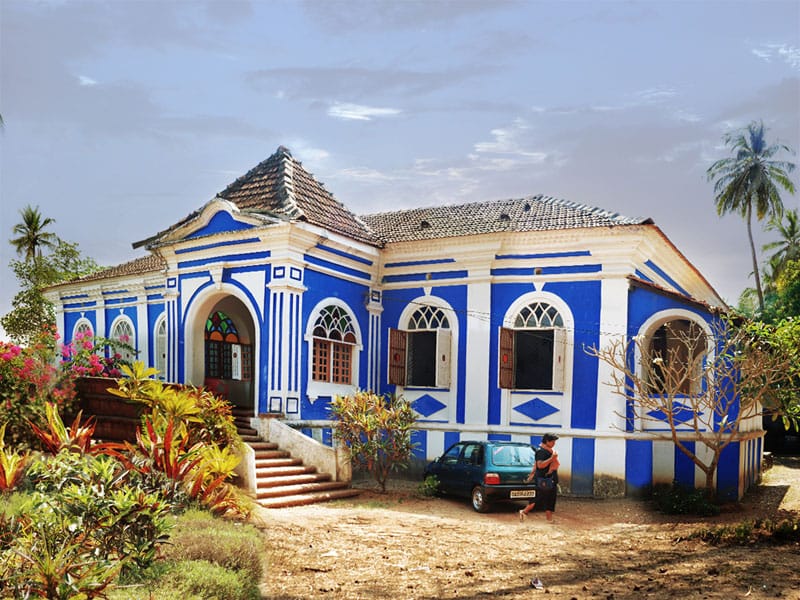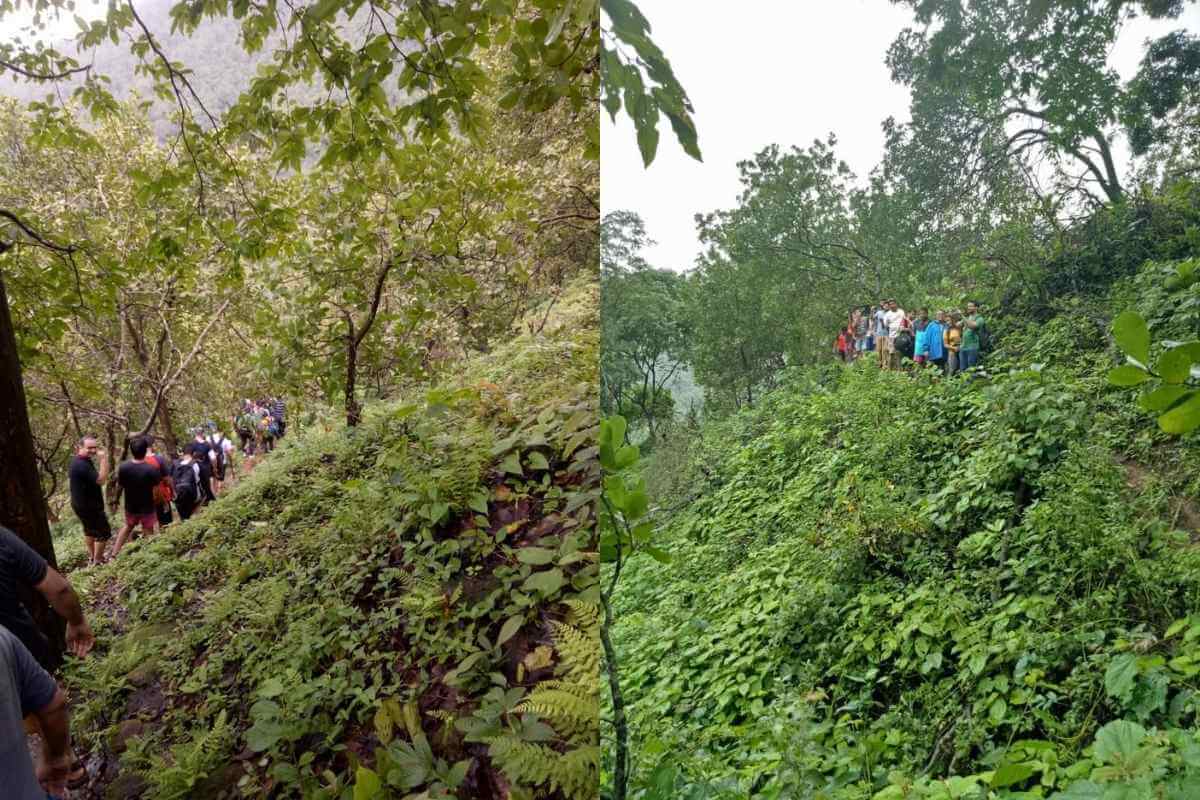The legacy of Goa lays in its colonial custom & culture influenced by the 450 years of Portuguese regime. The colonial architecture is the identity of the same. Goa has always been the subject to most visited place by the tourists from the world over. It’s tradition, custom and culture have always been shared through the generations. Everybody visiting Goa would always want to explore its tradition and culture more. Many have decided to settle down in this place. But now Goa is seeking the special status and that would mean to avoid any further encroachment from the outsiders. The picture may be different then.
One of the legacies is the long period of Portuguese colonization which is still quite in evident and that is the magnificent architecture of the traditional mansions of the Goan gentry. Goa can perhaps claim to be the only place on the subcontinent where houses dating back to the 1700s are still in pristine condition and still inhabited by generations of the original owners. Unlike the other colonial powers in India, the Portuguese managed to leave a much more visible mark on the residential architecture of the area they ruled. The British and the French left their mark on the architecture of huge buildings such as assemblies and railway stations which have since become landmarks of the period.
The Portuguese in Goa built residential houses reflecting a style which is hardly found elsewhere on the Indian subcontinent. These magnificent palatial houses inspired by European architectural style are still found in Goa today, although they are confined to the rural areas such as Chandor and Loutolim. An exception is the commercial town of Margao, which still has some fabulous houses in its Borda area. These mansions were built in an era which saw the Portuguese raking in a handsome profit from their trading colonies in Africa and South America. Interestingly, the owners were not usually Portuguese noblemen, but wealthy Goan merchants and high-ranking officials who were granted land by the Portuguese.

The material and techniques used in the construction of such houses were usually local while the furnishings and decorations came from all around the world. The walls and pillars were built of red laterite stone and local wood while the roof was overlaid with terracotta tiles from Mangalore. Inside there is the fine porcelain from China and Macau, cut glass and mirrors from Venice, chandeliers from Belgium and tapestries from Portugal. The exquisite furniture was carved from rosewood by the local craftsmen.
The exterior facades of these mansions are not the only thing that attracts the visitors. The interiors are much more impressive, with some houses even having their own mini-chapels and dance rooms. There are long, well-preserved dining and drawing rooms usually with a magnificent collection of blue china ceramics and glass items. Most such houses are accessible only by special request or appointment either directly from the owner or through the nearest Tourist Office. It is also advisable to seek such an appointment well in advance and it is customary to make a small donation which helps towards the upkeep and maintenance of these superb specimens of a bygone era.
There is lot more about Goa that I can keep on going for the endless time, but we do not have that much of space at the moment and to sum up the long story short, this article is based on the subject of colonial architecture of Goa. Here I am going to take you to the rollercoaster ride through the most famous colonial houses of Goa. The Portuguese style mansions which can be visited to have a glimpse of the lifestyle of the higher echelons of the Goan society existed under the Portuguese rule. This article is subsequent part of the first article published in the edition of November 2015 and concludes over here…

Salvador Costa mansion
This mansion in Loutolim, a South Goa village is famous for the many large and beautiful houses spread out in a radius of about 1 km from the nucleus of the village. The Costa mansion was built in the 19th century by two wealthy siblings and priests, Padre Pedrinho and Padre Laurence. Built in the Indian style (low-pitched tiled roof, wide verandas) with European accouterments (Gothic- style windows, cluster columns), it’s architecture straddles both worlds just as Goa still does.
Solar dos Colacos mansion
This is at Ribandar on the left bank of the River Mandovi, mid-way between Old Goa and Panjim. It is built in the baroque style with an imposing facade with a spectacular view of islands and the historical churches of Old Goa. It is, probably, the only Goan mansion that faces the river. Typical of the ambivalence of the times, Nazario Colaco II carved a sideboard of his dining room with scenes from the Ramayana. But this is counterbalanced by the strident Catholicism of the family’s private chapel.
Pinto de Rosario mansion
Situated in Porvorim, half-way between Panjim and Mapusa reflects more the joy of possession than reverence for the style. Piled up in sideboards and cup- boards are rare pieces of cut glass, silver, blue china, and ivory. The objects start is yet to be categorized and dated. But the sheer quantity and doubtless quality of most of the items are quite simply astounding. In Porvorim have Indo-Portuguese furniture and European and Chinese knick- knacks. The Italian floor tiling is the highlight of the parlor. Above the exquisitely carved sofa is a Dutch tapestry, a replica of Rembrandt’s Night Watch. The love- the chair is said to be 200 years old.

Mascarenhas mansion
Situated in Anjuna, north Goa is classic due to its characteristic ‘balcoes'(balconies). It is monumental. The riches overpower you. The seat along the length of the porch are L-shaped, of expensive wood, the glare is cut off with a mixture of brightly colored stained glass and, as if to contrast it, lightly tinted flint glass “such as which is no longer made” with fine floral etchings.
Vivian Coutinho mansion
Situated in Fatorda at the entrance of Margao reveals the care that went into the planning of the entrance of a house. The Coutinho had a well-kept garden, the green pleasantly contrasting the red of the masonry seats. They broke the monotony of the red wash and the outer wall, interspersing decorative tiles.
Colaco mansion – The corridor runs along the front facade and faces the Mandovi river. This is the only extant Goan mansion that faces the waterfront. The walls are washed in ox-blood color, one of the three traditional colors of Goan exteriors, the other being white (very Portuguese) and indigo (very Indian).

Palacio does Deao
This 213 years old mansion was built by a Portuguese nobleman, who was the Dean of the Church, and founder of Quepem town. The house faces the Church he built and is on the banks of the wildly beautiful Kushavati River. It is built in an unusual style blending elements of Hindu and Portuguese architecture. The lush gardens which have managed to preserve their historical features and have, since old times, been known as the most beautiful pleasure gardens in Goa.
Voddlem Ghor, Chandor
Built even before the arrival of the Portuguese, the house of Sara Fernandes is an imposing structure in the tranquil village of Chandor. Four decades after the ouster of the European rulers, the’ Voddlem Ghor’ or ‘Casa Grande’ has been recently declared as a ‘ heritage house’.
The White house
The White house at Saligao, North Goa; Built in the 17th century. This rendering in white is the result of the unwritten rule during the Portuguese occupation of Goa that no private house or building could be painted in white. Only churches and chapels enjoyed this privilege. However, this was not completely a matter of individual choice, since during Portuguese rule the owner of the house could be fined if his house was not painted.


























